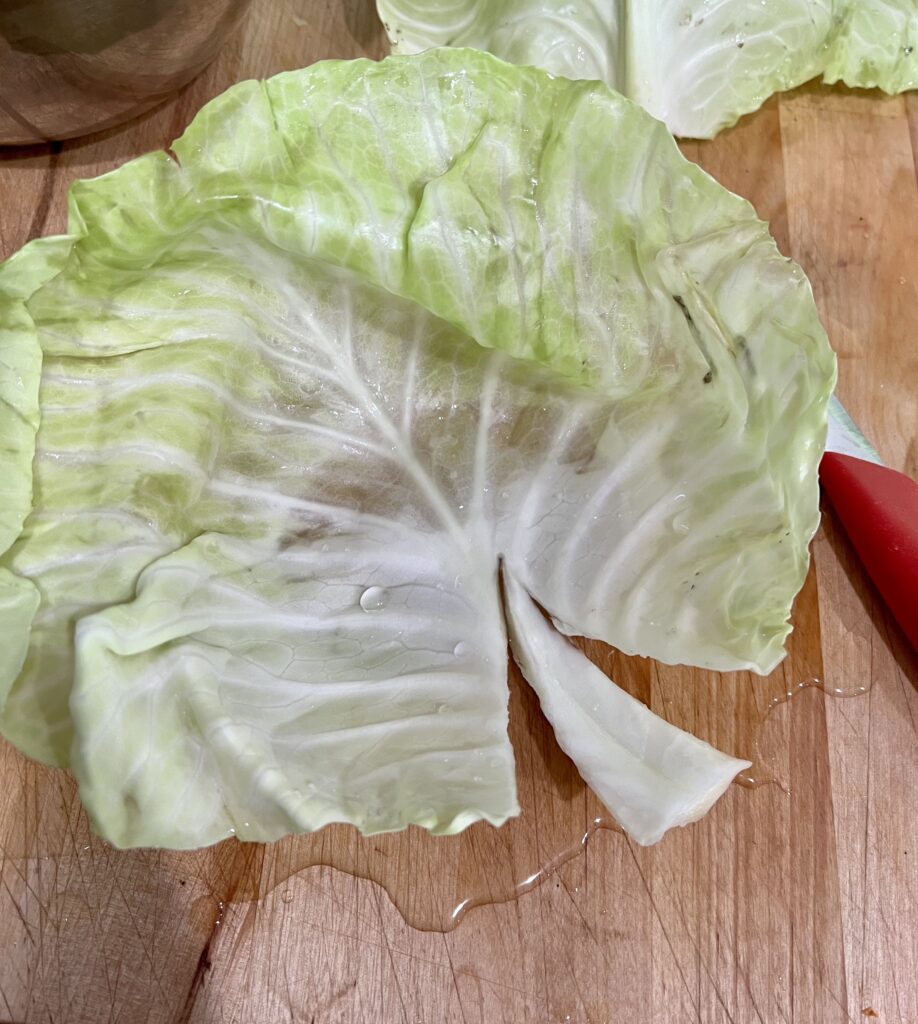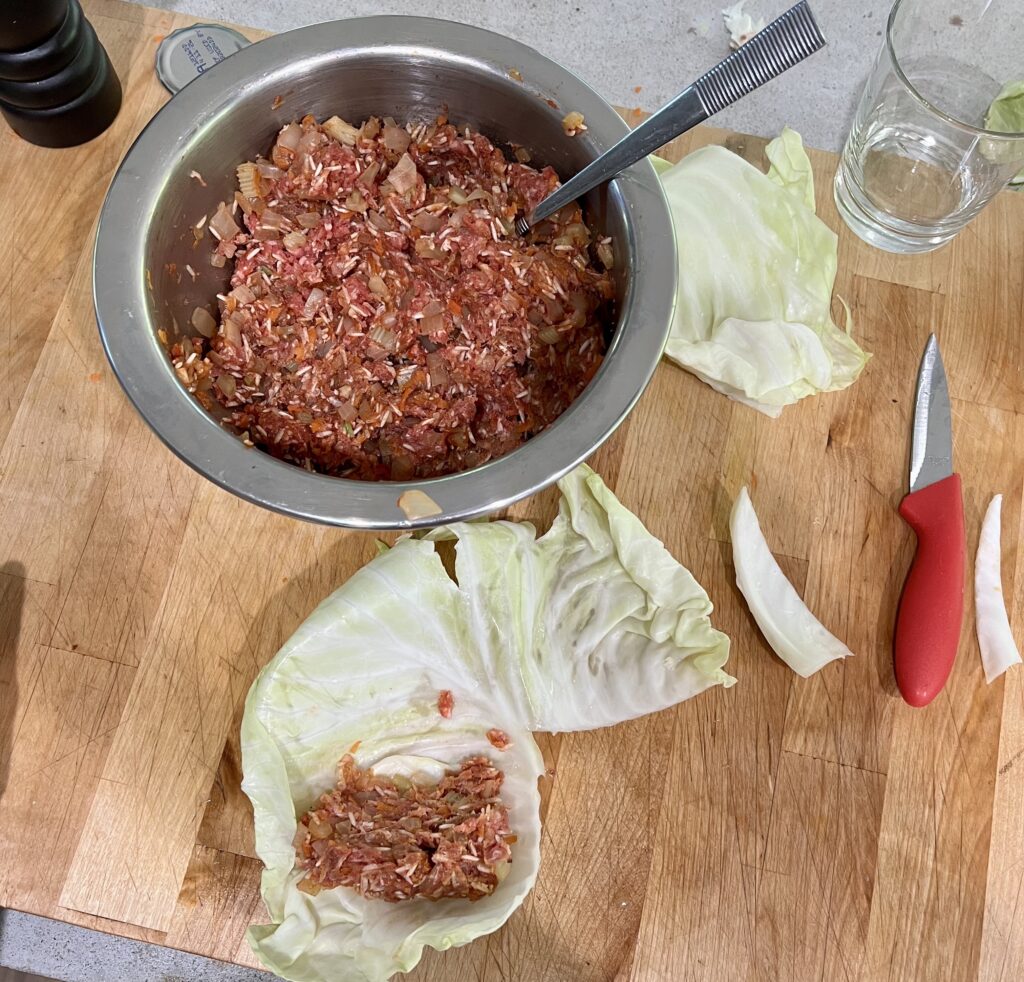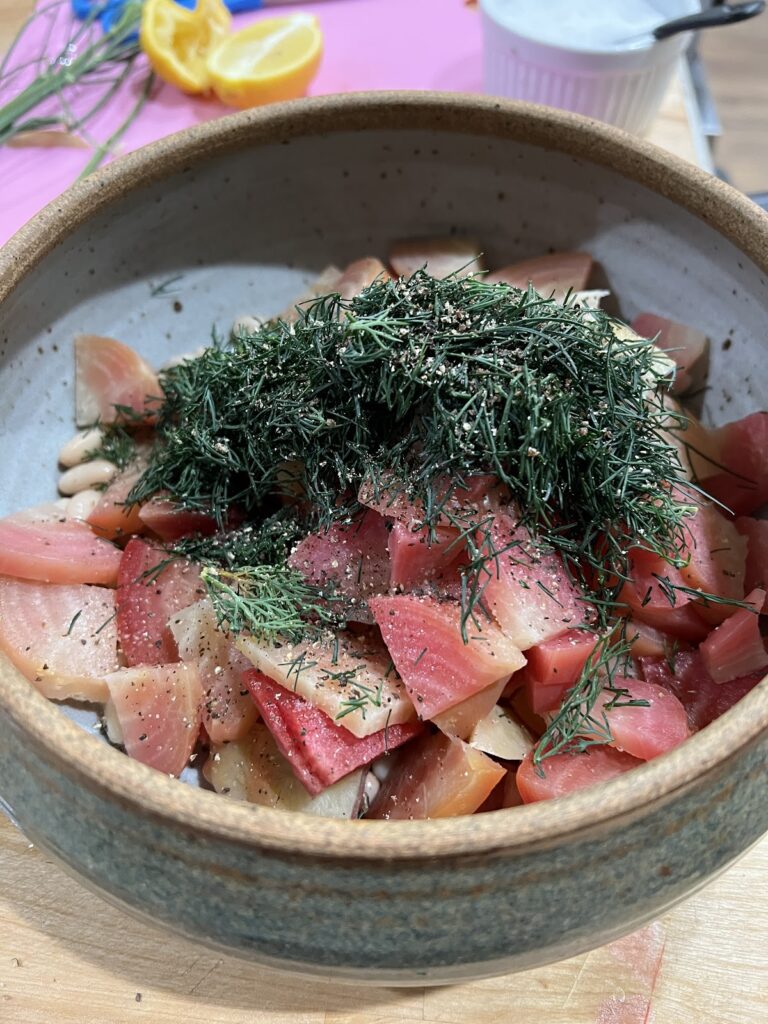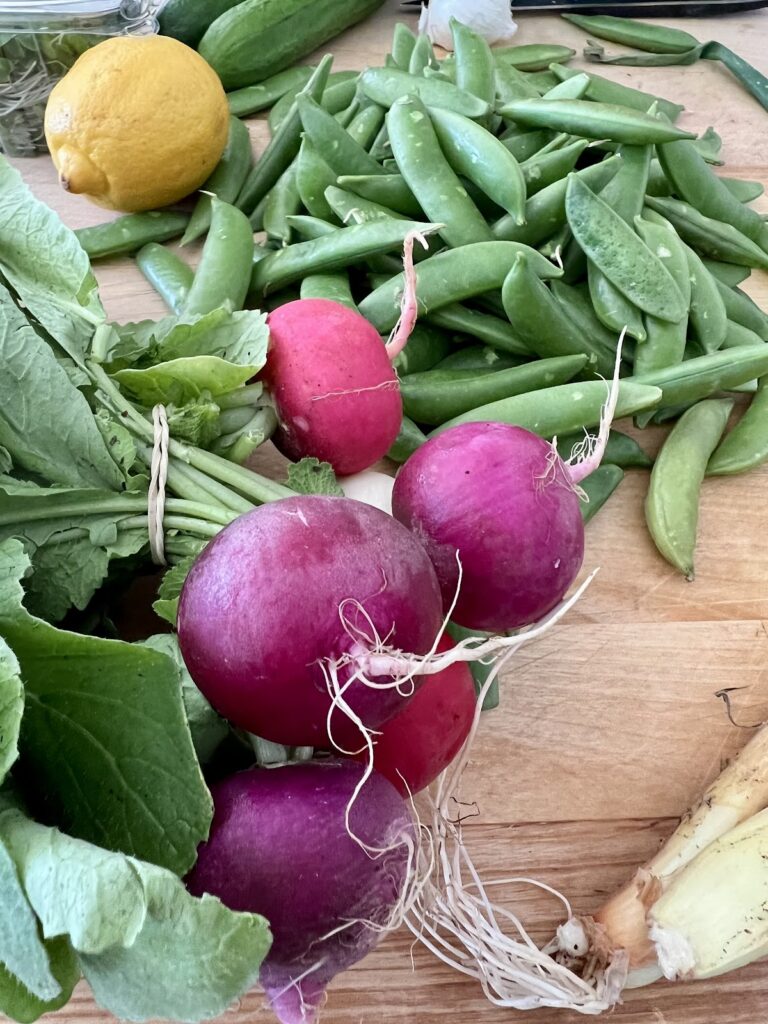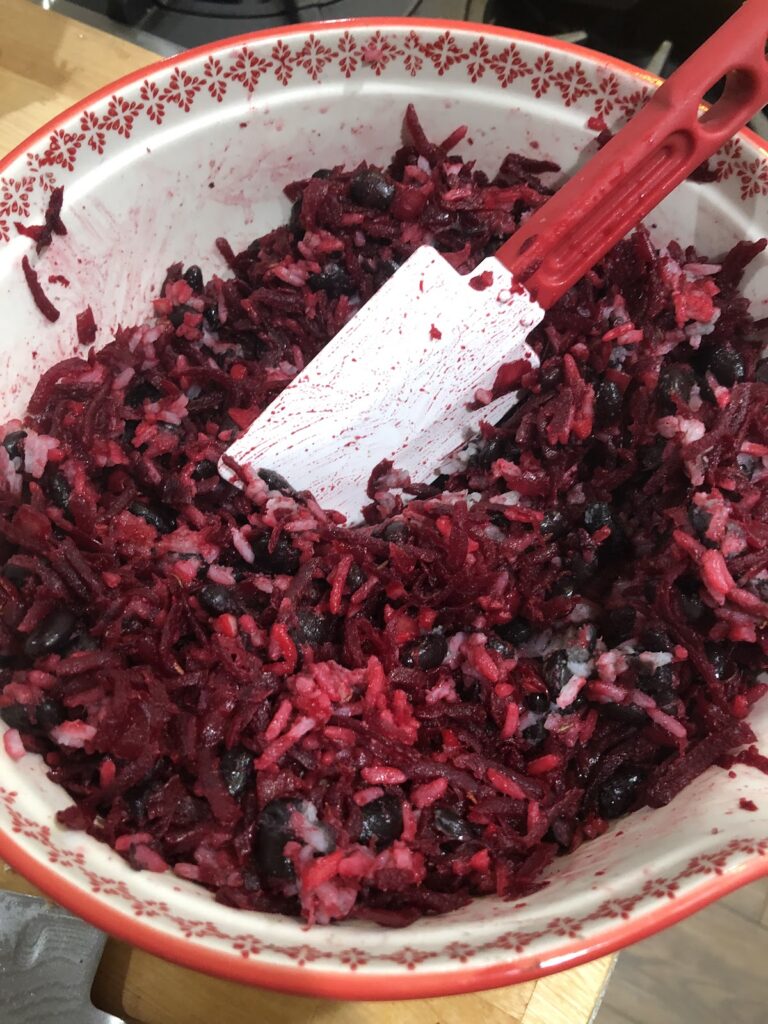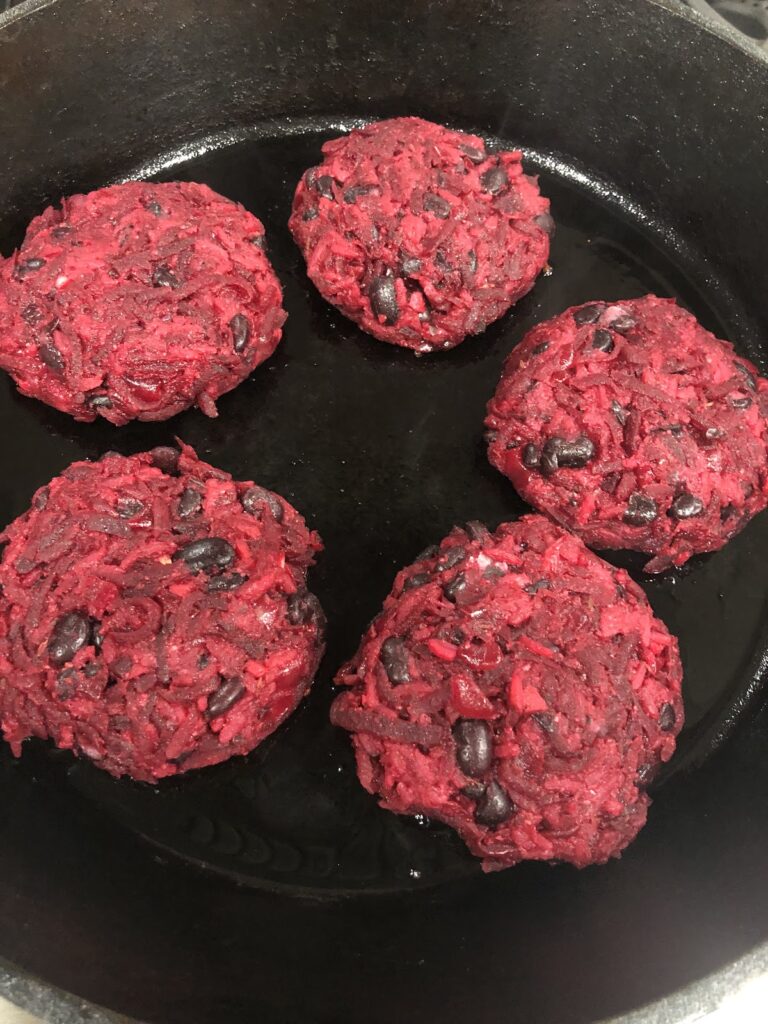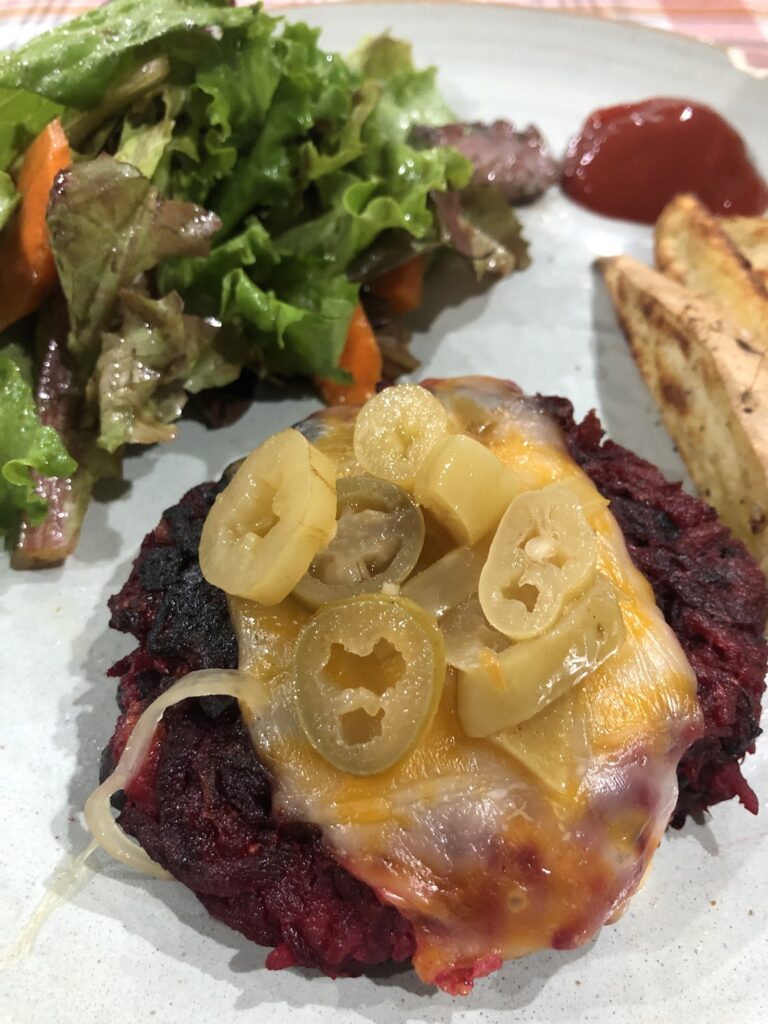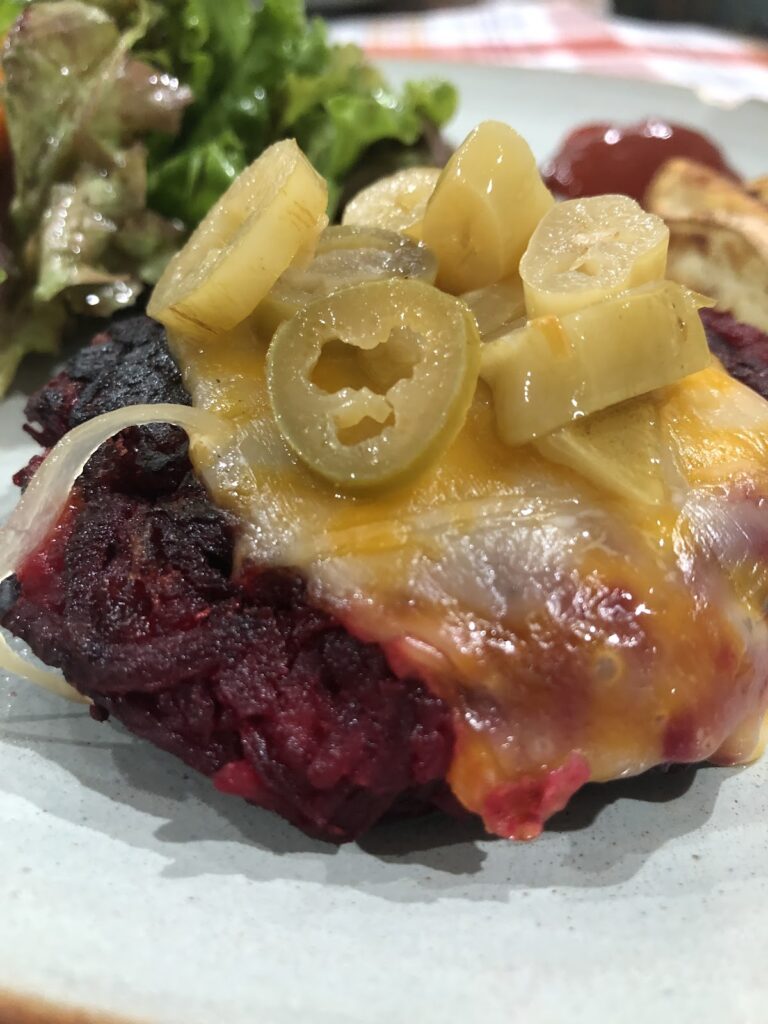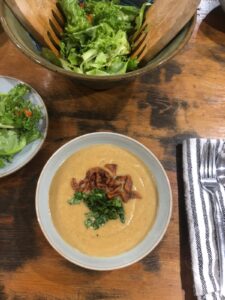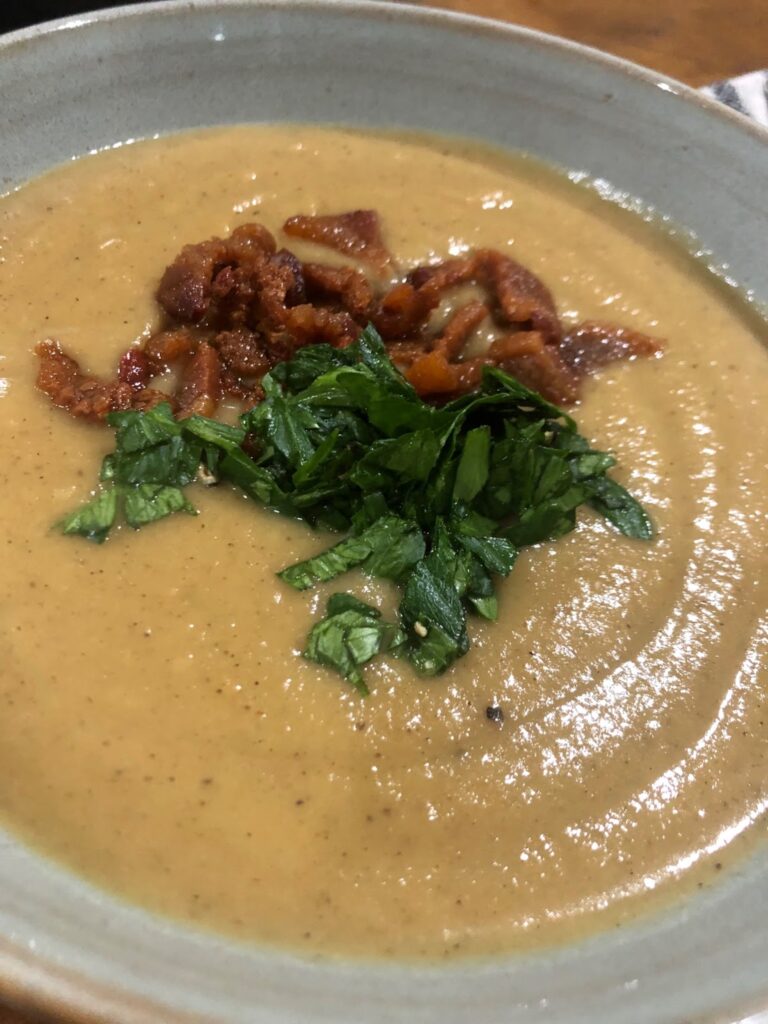Words and photos by Amanda Callahan of Callywood Farms
This is a super simple vegetable curry that is endlessly adaptable. If lima beans or field peas aren’t available, you can substitute canned beans (chickpeas would be great). Note that if you go with canned beans, you will need to reduce the stock to ½ cup and cook the beans with the summer squash. By taking this approach you can reduce the cooking time tremendously, and have dinner on the table in less than 30 minutes.
You can also treat this recipe as a “clean your refrigerator out” kind of dish. Just pay attention to different vegetable cooking times, and adjust as needed (for example, start onions or carrots earlier and finish with squash and softer green beans).



Ingredients
- Cooking fat of choice – oil or butter
- 1 onion, diced
- 1 jalapeño, minced
- 1-inch chunk of ginger, peeled and grated
- 3-4 garlic cloves, minced
- Salt (about 2 teaspoons for the whole dish) & pepper
- 2 tablespoons curry powder, divided
- 1 pound lima beans, rinsed and any debris removed
- 1 cup stock
- 5 small summer squash/zucchini, sliced (halved if thick)
- 1 can coconut milk
- 1 bunch of kale, Swiss chard or spinach, finely sliced
- 1 teaspoon garam masala
- 1 lime, juiced
Instructions
- In a large sauté pan with a lid, heat oil/butter over medium heat and add onion. Sauté the onion, ginger, and jalapeño until well done and browned in spots — about 8 minutes.
- Add the garlic, season with salt, pepper, and 1 tablespoon of curry powder. Stir to combine everything.
- Add lima beans and stock. Cover pan and let cook for about 25 minutes until lima beans are very al dente or not quite done cooking.
- Add the squash and coconut milk to the lima beans and combine everything. Continue cooking uncovered for another 10 minutes. At this point, the lima beans should be done and the squash just starting to cook through. Add the remaining curry powder, adjust to taste with salt and pepper. Add the greens and stir to combine.
- When everything is done cooking, turn off the heat and add the garam masala and lime juice. Stir and taste one last time for additional seasonings.
- Serve with rice. And thinly sliced cucumbers (I didn’t have any for these photos, but they make a marvelous garnish!).






